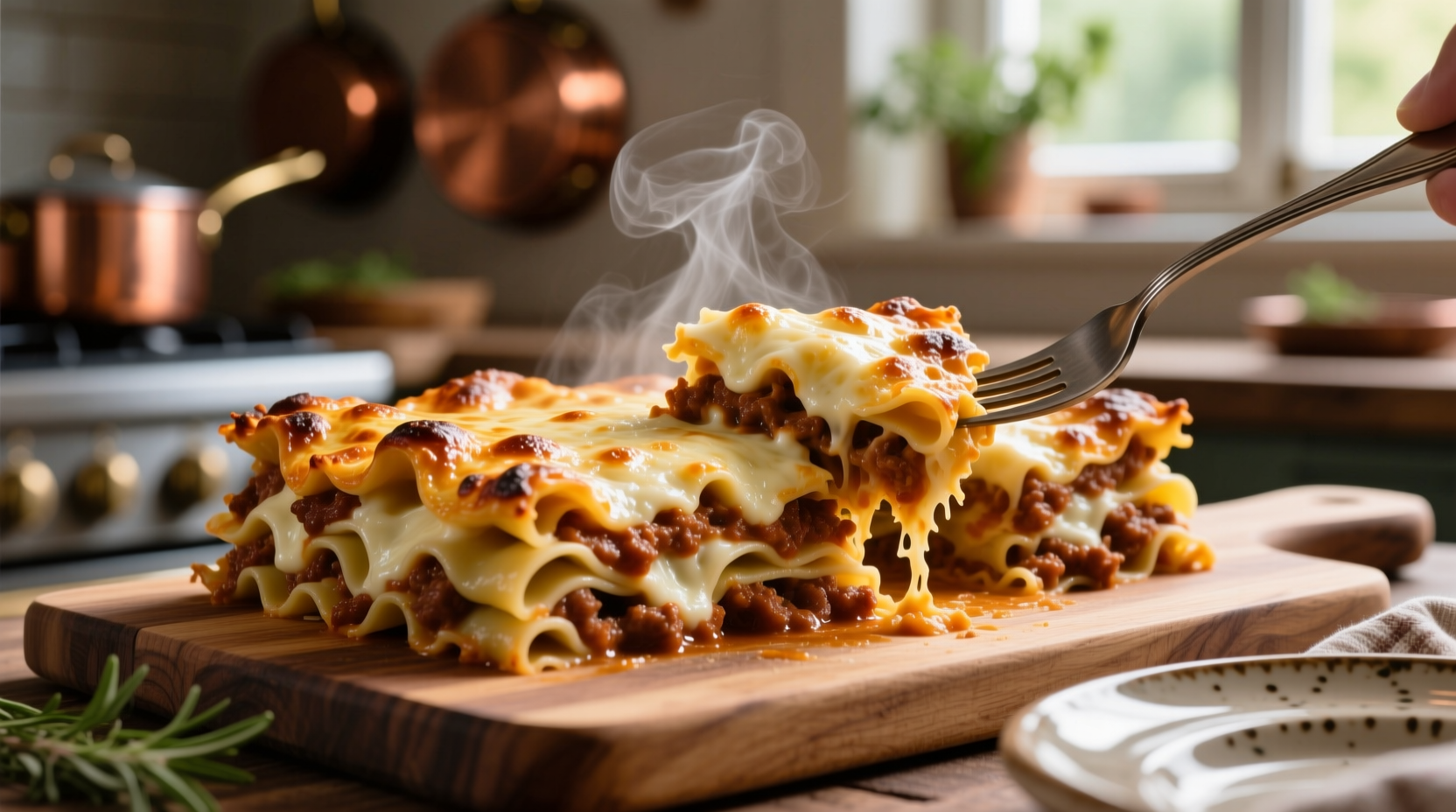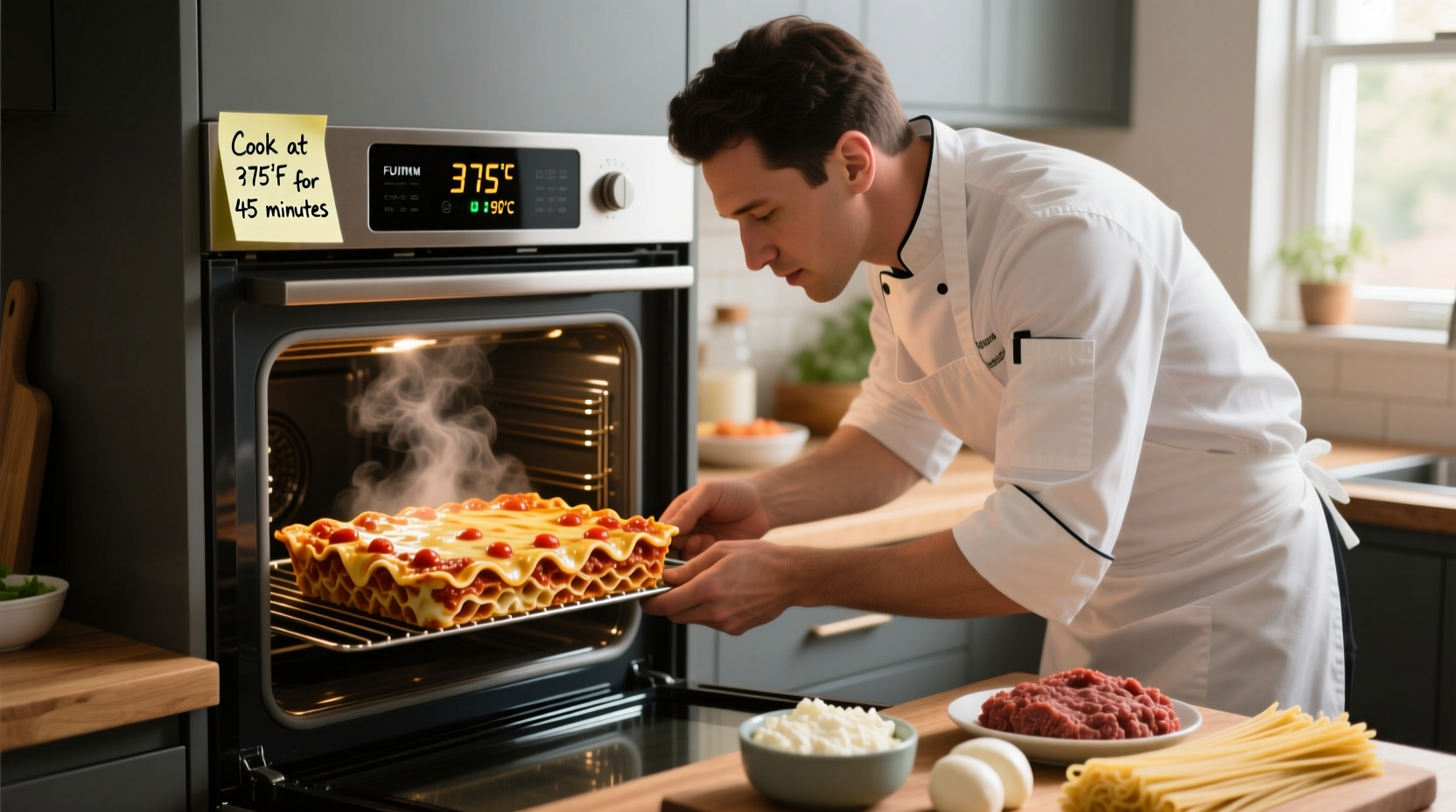When you're preparing one of the world's most beloved baked pasta dishes, getting the temperature right makes all the difference between a perfect lasagna and a disappointing meal. Whether you're a beginner cook or a seasoned home chef, understanding the science behind lasagna baking temperatures will transform your results.
Why 375°F Is the Perfect Lasagna Temperature
Lasagna requires a precise balance of heat to properly cook through all its components. At 375°F (190°C), several critical processes happen simultaneously:
- The pasta sheets soften completely without becoming mushy
- The cheese layers melt evenly and develop that desirable golden-brown crust
- The sauce simmers gently, allowing flavors to meld without separating
- Moisture evaporates at the right rate, preventing a soggy bottom layer
Going below 350°F risks undercooked pasta and separated ingredients, while temperatures above 400°F often lead to burnt edges with a cold center—a common lasagna pitfall.
| Oven Type | Recommended Temperature | Cooking Time | Special Considerations |
|---|---|---|---|
| Conventional | 375°F (190°C) | 45-55 minutes | Cover with foil for first 30 minutes |
| Convection | 350°F (175°C) | 35-45 minutes | Reduce temperature by 25°F from conventional |
| Frozen (store-bought) | 350°F (175°C) | 60-75 minutes | Follow package instructions precisely |
| Reheating leftovers | 325°F (160°C) | 20-30 minutes | Add broth to prevent drying out |
Temperature Adjustments for Different Situations
Not all lasagnas bake the same. Your ideal temperature might need adjustment based on several factors:
Convection vs. Conventional Ovens
Convection ovens circulate hot air, cooking food about 25% faster. When using convection, reduce the temperature by 25°F (to 350°F/175°C) and check for doneness 10-15 minutes earlier. The USDA Food Safety and Inspection Service confirms that convection cooking requires lower temperatures to achieve equivalent results to conventional ovens (source).
Fresh vs. Frozen Lasagna
Homemade fresh lasagna typically needs the standard 375°F temperature. Frozen lasagna, whether store-bought or your own frozen batch, requires a lower temperature (350°F/175°C) and longer cooking time to allow for proper thawing during baking. The University of Minnesota Extension notes that frozen foods require lower temperatures to ensure even cooking throughout (source).
Baking Dish Material Matters
The material of your baking dish affects heat distribution:
- Stoneware/ceramic: Retains heat well but heats slowly—maintain standard temperature
- Dark metal: Heats quickly and can cause over-browning—reduce temperature by 25°F
- Clear glass: Allows radiant heat to penetrate—maintain standard temperature but monitor closely

Step-by-Step Temperature Guide for Perfect Lasagna
Follow this temperature timeline for consistently excellent results:
- Preheat oven to 375°F (190°C) while assembling lasagna
- Cover with foil for the first 30 minutes to trap moisture and cook pasta layers
- Uncover for the final 15-25 minutes to develop the golden cheese crust
- Check internal temperature—it should reach 165°F (74°C) for food safety
- Rest for 15 minutes before serving to allow layers to set
The 15-minute resting period is crucial—it allows the layers to stabilize, making clean slices possible. Cutting too soon causes the lasagna to collapse into a messy pile.
Troubleshooting Common Temperature Issues
Even with the right temperature setting, problems can occur. Here's how to fix them:
Soggy Bottom Layer
Cause: Insufficient bottom heat or too much moisture in ingredients
Solution: Place baking dish on a preheated baking sheet or the lowest oven rack position for the first 20 minutes
Burnt Edges with Cold Center
Cause: Oven temperature too high or improper rack position
Solution: Lower temperature by 25°F and position rack in the center of the oven
Cheese Not Melting Properly
Cause: Cheese type or insufficient uncovered baking time
Solution: Increase uncovered baking time by 5-10 minutes or broil for 1-2 minutes at the end (watch carefully!)
Professional Chef Tips for Temperature Control
From my experience working in professional kitchens, here are temperature insights you won't find in most recipes:
- Always preheat your oven fully—don't put lasagna in a warming oven
- Use an oven thermometer to verify actual temperature (many ovens are inaccurate)
- For extra-rich lasagnas with multiple cheese layers, start at 350°F for 20 minutes, then increase to 375°F
- If using no-boil noodles, add 5-10 minutes to cooking time at the same temperature
Remember that oven temperatures can vary by as much as 50°F from the set point, according to Consumer Reports testing. An independent oven thermometer costs just a few dollars but ensures accurate baking temperatures every time.
Food Safety Considerations
Lasagna contains multiple perishable ingredients that must reach safe internal temperatures. The USDA Food Safety and Inspection Service recommends that cooked pasta dishes reach a minimum internal temperature of 165°F (74°C) to ensure food safety (source). Always verify with a food thermometer inserted into the center of the dish.











 浙公网安备
33010002000092号
浙公网安备
33010002000092号 浙B2-20120091-4
浙B2-20120091-4